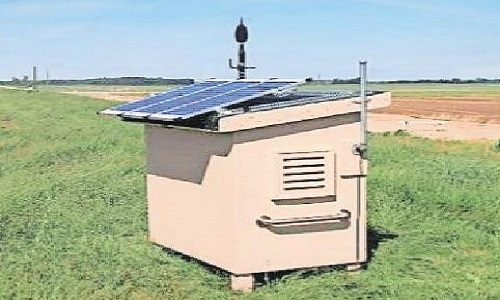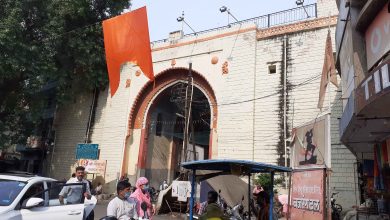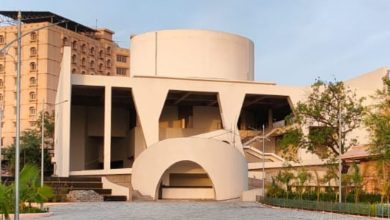MPCB to Install Four Noise Monitoring Stations Soon

In an ambitious stride towards combating noise pollution, the Maharashtra Pollution Control Board (MPCB) has announced the installation of four Continuous Noise Monitoring Stations (CNMS) in Nagpur. This is the first time such an initiative is being undertaken in the city, promising a significant leap in environmental monitoring and pollution control.
Significance of Noise Monitoring
Noise pollution is an often overlooked but critical environmental issue. Prolonged exposure to high noise levels can lead to numerous health problems, including stress, hearing loss, and cardiovascular diseases. Therefore, continuous monitoring is essential for timely intervention and mitigation.
Real-Time Data Collection
The CNMS will provide real-time data on noise levels throughout the city, functioning 24 hours a day. This continuous data flow will be automatically uploaded to the MPCB website, offering transparency and accessibility for researchers, policymakers, and the general public.
Locations for the CNMS
The four CNMS will be strategically placed at key locations in Nagpur to ensure comprehensive coverage:
- Town Hall in Mahal
- Visvesvaraya National Institute of Technology (VNIT) near IT Park
- Laxminarayan Institute of Technology (LIT) at Amravati Road
- MPCB Office in Civil Lines
These locations were chosen due to their existing infrastructure, which includes Continuous Ambient Air Quality Monitoring Stations (CAAQMS).
Integration with Existing Infrastructure
By installing the CNMS alongside the CAAQMS, the MPCB aims to create a more integrated and efficient environmental monitoring network. This integration will facilitate the simultaneous tracking of both air and noise pollution, providing a more holistic view of the city’s environmental health.
Challenges and Solutions
Human Interference
One of the challenges highlighted by Hema Deshpande, Regional Officer, MPCB, is the increased human interference near the CAAQMS in Town Hall, Mahal. To address this, the MPCB plans to relocate the CAAQMS and CNMS to a new site provided by the Nagpur Municipal Corporation (NMC).
Tendering Process
The tendering process for the installation of the CNMS is currently underway. Ensuring that the process is completed efficiently and transparently is crucial for the timely deployment of these stations.
Current Noise Monitoring Practices
At present, the MPCB conducts manual noise monitoring during major festivals like Diwali and Ganesh Chaturthi. These efforts, though valuable, provide only a snapshot of the noise levels in the city. The CNMS will enhance these efforts by offering continuous data, thereby enabling more accurate and comprehensive analysis.
Advantages of Continuous Monitoring
Continuous noise monitoring offers several advantages over periodic manual monitoring:
- Detailed Data Collection: Continuous monitoring captures fluctuations in noise levels throughout the day and night.
- Timely Interventions: Real-time data allows for prompt actions to mitigate noise pollution.
- Policy Formulation: Accurate data supports the development of effective noise control policies.
Mitigation Measures
No Honking Rule
The police department in Nagpur has implemented a ‘No Honking’ rule on city roads as a measure to reduce noise pollution. This rule, coupled with data from the CNMS, will help in identifying and addressing the primary sources of noise pollution in the city.
Public Awareness
Raising public awareness about the impacts of noise pollution and the importance of reducing it is crucial. Educational campaigns and community engagement can play a significant role in fostering a more noise-conscious society.
Future Prospects
The installation of the CNMS is a significant step towards better noise pollution management in Nagpur. However, this is just the beginning. The MPCB plans to extend this initiative to other parts of the state, aiming for a wider and more effective noise monitoring network.
Technological Advancements
Leveraging advancements in technology will be key to the success of these initiatives. Future plans may include the use of advanced sensors, data analytics, and machine learning to predict and mitigate noise pollution more effectively.
Collaboration and Research
Collaboration with academic institutions, research organizations, and other stakeholders will be essential for the continuous improvement of noise pollution management strategies. These partnerships can provide valuable insights and innovative solutions to tackle noise pollution.
The installation of four Continuous Noise Monitoring Stations in Nagpur marks a significant milestone in the fight against noise pollution. By providing real-time data, these stations will enable more effective monitoring, analysis, and mitigation of noise pollution in the city. As the MPCB continues to expand and enhance its noise monitoring capabilities, Nagpur can look forward to a quieter, healthier environment.
1. What are Continuous Noise Monitoring Stations (CNMS)?
CNMS are advanced systems designed to monitor noise levels continuously in real-time. They provide 24/7 data, which is essential for effective noise pollution management.
2. Why is noise pollution monitoring important?
Noise pollution can lead to various health issues, including stress, hearing loss, and cardiovascular problems. Monitoring helps in identifying noise sources and implementing measures to mitigate them.
3. Where will the CNMS be installed in Nagpur?
The CNMS will be installed at Town Hall in Mahal, VNIT near IT Park, LIT at Amravati Road, and MPCB Office in Civil Lines.
4. How will the CNMS data be used?
The real-time data from CNMS will be uploaded to the MPCB website, aiding researchers, policymakers, and the public in understanding and managing noise pollution.
5. What other measures are being taken to reduce noise pollution in Nagpur?
Apart from installing CNMS, the police department has implemented a ‘No Honking’ rule, and public awareness campaigns are being conducted to educate citizens about the impacts of noise pollution.









